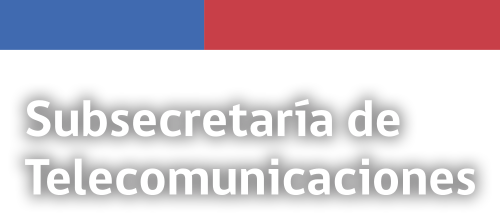SANTIAGO, CHILE, JULY 5 OF 2021.- Chile will be the first Latin American country to leverage Starlink to close the country’s digital divide. Starlink is a constellation of Internet satellites designed to deliver high-speed, low-latency broadband connectivity throughout the globe, including locations where service is too expensive, unreliable, or entirely unavailable. Ministry of Transportation and Telecommunications (MTT), through the Vice-Ministry of Telecommunications (SUBTEL), and Starlink explored the technical feasibility to conduct pilots on rural and/or isolated communities that lack adequate digital connectivity. Consequently, Starlink will initially deliver to schools in two locations: Caleta Sierra (Coquimbo Region) and Sotomó (Los Lagos Region). “The closing of the digital divide in Chile requires technological innovation, and that implies that we open to the deployment of new technologies that complement those already in service in the country, such as fiber optic and 5G networks,” said Chile’s Minister of Transportation and Telecommunications, Gloria Hutt, who also said that “sometimes our geography makes the deployment of traditional broadband networks complex. For this reason, we are proud that Chile will be a pioneer in Latin America to implement this satellite Internet service, providing high-speed connectivity and capacity to two locations in Chile”. Meanwhile, Chile’s Vice-Minister of Telecommunications, Francisco Moreno, indicated that “the beginning of the Starlink service in Chile will mark a before and after in Chilean government’s work to reduce the existing digital divide in the country.” He added that “our work has yielded very concrete results and in these almost 4 years of government we have seen the growth of fixed Internet in Chile, going from 45% to 60% of household penetration. Without a doubt, these are great advances, but the goal is very ambitious, which is why today we are giving way to Starlink services in Chile as a concrete alternative to improve the quality of life of Chileans who live in isolated and/or rural locations, and do not have the opportunity to access a high quality Internet”. “Through this achievement, access to better connectivity is democratized for rural or geographically isolated sectors, integrating those territories. This has a huge impact to enable diverse productive areas and to connect thousands of compatriots who will no longer require fixed lines to send and receive information, which is a key advance in the digital readiness process that our country is experiencing and that our government is promoting”, said Lucas Palacios, chile’s minister of Economy. The vice minister of Economy, Julio Pertuzé, indicated that “this is a fundamental step to enable people in localities and communities in Chile to connect to the rest of the world. We cannot visualize a post-pandemic context without across-the-board connectivity that allows both productive sectors and citizens to thrive regardless of where they are”. “Starlink was designed for remote communities like those in Caleta Sierra and Sotomó” said Gwynne Shotwell, President and Chief Operating Officer of SpaceX. “High-speed connectivity can have a transformational impact on these communities and we are eager to support these pilots, starting with local schools.” Details of connectivity pilots The connectivity pilots consider the delivery of Starlink for the provision of Internet service, for one year, with data speeds varying from 50Mb/s to 150Mb/s (as the service is in the beta stage). For its part, it should be noted that the services are authorized by an experimental permit issued by SUBTEL for non-commercial use. |
Chile will be the first country in Latin America to be served by Starlink
